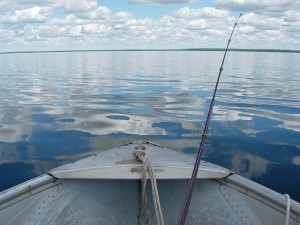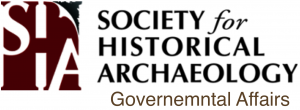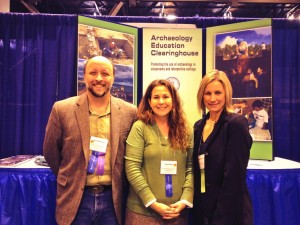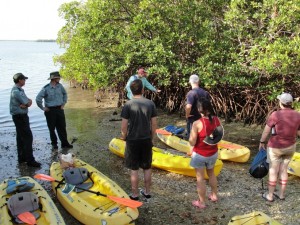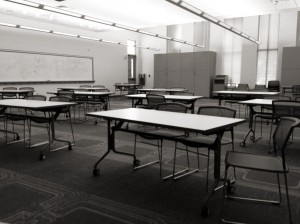A Very Busy May for Governmental Affairs
 May was an eventful month for the Society for Historical Archeology’s Governmental Affairs Committee and SHA’s government affairs counsel, Cultural Heritage Partners. A number of proposals were introduced and discussed in both houses of Congress. While these changes are intended to make aspects of historic preservation easier and more efficient, they fall woefully short in the eyes of the archeological community and can endanger historic preservation.
May was an eventful month for the Society for Historical Archeology’s Governmental Affairs Committee and SHA’s government affairs counsel, Cultural Heritage Partners. A number of proposals were introduced and discussed in both houses of Congress. While these changes are intended to make aspects of historic preservation easier and more efficient, they fall woefully short in the eyes of the archeological community and can endanger historic preservation.
- Section 1303 of the “MAP-21 Reauthorization Act,” which is the reauthorization of the current transportation legislation, proposes to use the Section 106 process as a means to fulfill some of the current requirements of Section 4(f) of the transportation act. The goal is to reduce what is perceived as duplication between Section 106 and Section 4(f).
- The Military LAND Act (Section 2816 in NDAA, H.R. 4435) would amend the National Historic Preservation Act (NHPA) by allowing any federal agency that manages property to block or revoke the listing of a historic property on the National Register of Historic Places, as a National Historic Landmark or on the World Heritage List by invoking “reasons of national security.”
- The FIRST Act (H.R. 4186) would create of a new level of review at the National Science Foundation to determine if research is worthy of federal funding and “in the national interest.” The House also amended the appropriations bill for NSF to include a provision shifting millions of dollars from social sciences to physical sciences.
- NPS is considering a proposal to amend the National Historic Preservation Act of 1966 (NHPA) to include “landscapes” as a property type and “landscape architecture” as an area of significance. SHA sent a letter to Stephanie Toothman stating its reasons for opposing the proposal, and will meet with her in June.
SHA has submitted several letters addressing the proposals, explaining why they damage historic preservation, or are ineffective or simply unnecessary. SHA does not stand alone in its opposition. The American Cultural Resources Association joined with SHA against the proposed changes to Section 4(f) of the Department of Transportation Act. The Department of Defense provided testimony on the Military LAND Act, stating that it is unwanted and unnecessary; the Preservation Partners are also opposing Section 2816 in the NDAA (formerly the Military LAND Act).
SHA and Cultural Heritage Partners are working to avoid these potentially expensive and unnecessary changes. We want to keep Congress from fixing what isn’t broken.
Meet a Member: John Littlefield
Over the coming months, we’ll be bringing you entertaining interviews with a diverse array of your fellow SHA members. Meet a member for the first time or learn something about a colleague that you never knew before. This blog series also offers current members an opportunity to share their thoughts on why SHA membership is important (Camaraderie? Professional service? Exchange of ideas in conference rooms and beyond? You tell us!). If you would like to be an interviewee, please email the Membership Committee Social Media Liaisons Eleanor Breen (ebreen@mountvernon.org) or Kim Pyszka (kpyszka@aum.edu).
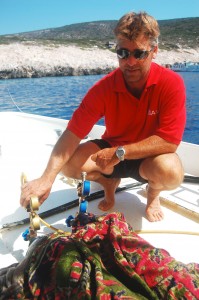 An Interview with John Littlefield, PhD student at Texas A&M University (Maritime Archaeology), M.A. from Texas A&M, B.S. from College of Charleston
An Interview with John Littlefield, PhD student at Texas A&M University (Maritime Archaeology), M.A. from Texas A&M, B.S. from College of Charleston
What is the first site you worked on? What is the last one (or current one)?
The first “site” I worked on was a not a site at all, but a terrestrial survey in central Turkey, if that counts. I followed that with work at a colonial site, Charles Towne Landing, in South Carolina. Completely different environments, but both equally interesting. The last “site” I worked on was also a survey, of the waters around ancient Troy and Çanakkale, Turkey- again, if that counts. The last specific site was a potential pre-Clovis excavation in a Florida river. I was amazed at the ability to be able to cut beautiful walls in the river bed down to about 13 m. We don’t get the type of substrate to allow fine trowel work in a sea or ocean environment.
Fieldwork or labwork?
This presents a very difficult choice. Since most of my current work in done on underwater sites, I live on, and work from, a boat for weeks or even months at a time. Fieldwork has taken me from the freshwater rivers of Florida to the Mediterranean Sea to excavate Bronze Age material, Hellenistic marble, etc. I obviously love what I get to do during fieldwork. However, I also really like artifact photography and analysis, pXRF analysis of metal artifacts, and the very detailed recording ancient ship remains in the lab also.
If you could have lunch with any archaeologist (past or present) who would it be?
Wow, that is an intriguing question. So many people come to mind, past and present. As a maritime archaeologist, George Bass is a bit of a sage for me. He obviously is of great influence to the field of nautical archaeology and I am very fortunate to get to visit with George on a very regular basis. In fact, I had the opportunity to work and even dive with him at the re-visit excavation of the Bronze Age shipwreck at Cape Gelidonya in 2010. I would add that I would love to have an afternoon with to pick Lewis Binford’s brain, to have a mint julep with Basil Gildersleeve, or chat with Paul Bahn about his Bluffers guide to Archaeology.
What did you want to be when you grew up?
That presumes that I have grown up. As a kid, I wanted to be an Olympian, but as much as I tried, I always seemed to be the second faster distance runner. After high school I moved into a blue collar career, so it took me many years to find my calling as a maritime archaeologist. I left that blue collar job, went back to school, and took a position as a diver at the South Carolina Aquarium. When I stumbled into an anthropology class and discovered archaeology, it did not take long to develop the desire to marry my new found passion with diving to that of archaeology. So if and when I do actually grow up, I would like to continue on this path.
Why are you a member of SHA?
I think it is important to support the institutions in our field. It helps in network development and I like getting up to date archaeological data through the associated journals, websites, and conferences.
At what point in your career did you first join SHA?
I joined pretty early- I was still an undergraduate at College of Charleston when I first joined.
How many years have you been a member (approximately)?
I first joined in 2006 I believe.
Which benefit of belonging to SHA do you find the most beneficial?
Definitely the up-to-date information, particularly about ethics, methods, and practices in the field.
APTC: Job Fishing in the Digital Sea
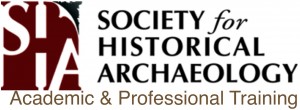 So, like many of us, I’ve been on the job market in the past year. I finished my PhD at the College of William & Mary (Hark upon the Gale!) and am trying to have that take me somewhere. To facilitate such, I have cultivated a number of online tools to notify me about job openings around the country (sorry, this is a US-oriented post).
So, like many of us, I’ve been on the job market in the past year. I finished my PhD at the College of William & Mary (Hark upon the Gale!) and am trying to have that take me somewhere. To facilitate such, I have cultivated a number of online tools to notify me about job openings around the country (sorry, this is a US-oriented post).
To push the SHA’s effort, I’ll start with “our” resources. The SHA maintains a job board (click here), which I check frequently. Jobs are automatically removed after 90 days, so anything on there is fairly current. As we’re historical archaeologists, these are the most relevant to our specialties. The SAA maintains one, as well (click here). Like the SHAs, it’s a fairly standard enumeration of open positions, skewing academic, but their postings stay up there for longer. Beyond the job boards, there are some other, more sophisticated things to try.
The AAA job board operates, in some ways, like the SHA and SAA counterparts, but with more features. As a job-seeker, you can construct a profile for others to review, which is nice, but I get the feeling it doesn’t get used much. More useful, however, is the ability to set up automated alerts based on certain search terms. Every time a job gets posted on the AAA board with “historical archaeology” in the description, I get an e-mail alert with a link to the posting. It’s a very helpful function, and the e-mails usually arrive in the morning, right around when I’m spoon-deep in my cereal, so it’s a nice surprise with breakfast.
Archaeologyfieldwork.com is another go-to resource. It’s particularly helpful in that it comes in so many different formats. You can go to the page and use it like a standard job board. They also have a Twitter feed and a Facebook page, both of which will pop up in your various queues. A hearty tip-of-the-hat to Jennifer Palmer for making this such a valuable resource. My favorite way to access this resource, however, is an RSS feed. I, like many, bemoaned the demise of Google Reader, as it was my go-to resource for news reading. I’ve replaced it with Feedly, and loaded the page’s RSS channel (click here) as a feed, which updates regularly. AFW carries more agency and shovel bum gigs than do the aforementioned job boards. Shovelbums also does postings on CRM jobs, but in an older interface.
Also on Twitter, keep an eye on Get Anthropology Jobs (@GetAnthropoJobs), which carries a lot of adjunct and instructor positions, the helpfully-named Archaeology Postdocs (@archpostdocs), and ArchaeoJobs (@ArchaeoJobs), which is run out of Dublin and features more European content. I don’t subscribe to them directly, but have all of these in a private archaeology jobs list, which I can call up in Twitter or maintain as a separate stream in HootSuite, which lets you view more than the one Twitter feed at a time. I use HootSuite because I maintain my own Twitter feed (@cgdrexler) as well as that of my office (@aas_sau), and HootSuite keeps me from having to log-out and log-in constantly.
Also, on Feedly, I subscribe to updates to the Academic Jobs Wiki, archaeology jobs section (click here). As the name implies, it’s focused on academic jobs, but serves two purposes. First, like the job boards, it announces positions, though rarely something that doesn’t appear on the other boards. Well, belay that. It does carry more international postings than the US-oriented job boards already mentioned. What is, perhaps, more helpful is that, as it’s a wiki, people can anonymously post information on it about the progress of the search. Did the University of South Mumblesticks ask for phone interviews? They did? OK, I didn’t get a request, so that’s probably off the table for me. It lets the job-seeker start to mentally move on, and can provide some closure in an age when a lot of places don’t actually send out rejection letters.
On that last front, a friend of mine, Linda Ziegenbein, put together an Academic Job Rejection Letter Generator to provide full closure for those who are still waiting to hear from a lost cause. Lamentably, after a story appeared about it, the Generator received 10,000 hits in three days… wow.
OK, we have to wind up on a more positive note…
I know, I’ll highlight that the Arkansas Archeological Survey currently has three positions open. Two are for station assistants (one in Monticello, one in Arkadelphia), and one for a station archaeologist (in Magnolia). Check them out!
What resources and tools do you use as part of your job hunt? Leave us a comment below with your favorite resources, tips, and tricks!
Diggers: making progress
 Well it happened and it appears you missed it. I was on an episode of Diggers. I expected a torrent of disapproving emails from colleagues or, at least, a few snarky comments from friends. It’s been a couple of weeks and the only person I have heard from was a former student who thought it was cool that one of her professors was on television. And this was the show that was going to goad the metal detecting community into a looting frenzy?
Well it happened and it appears you missed it. I was on an episode of Diggers. I expected a torrent of disapproving emails from colleagues or, at least, a few snarky comments from friends. It’s been a couple of weeks and the only person I have heard from was a former student who thought it was cool that one of her professors was on television. And this was the show that was going to goad the metal detecting community into a looting frenzy?
So how did I feel about the program?
Initially, relieved. I was afraid that it would validate everything the naysayers had accused the show of doing and I would be run out of town on a rail. But it wasn’t like that. It certainly was not an impeachable offense. But it wasn’t very good either. None of my keen archaeological insights or witty repartee with King George and the Ringmaster made it into the show. I was reduced to a 2 minute bit at the end where I identified some of the swag the boys had recovered. How did that happen and what should happen next?
When I was approached about having the show visit one of my sites I was initially aghast. I did not want to have those two loons beeping around my site in search of “nectar.” However, I was a part of the group that recommended that, to improve the show, they should work with established archaeologists whenever possible. Hoisted by my own petard! I had originally arranged for them to look for an 18th century site rumored to be where Blackbeard lived, but they were unable to secure access to the property. Instead, I had them come out to a 19th century plantation I was surveying.
The shoot went well. The guys are really quite personable when they are not on camera and being directed in their silliness. The production company had their contract archaeologist lurk just off camera, to identify artifacts and mark the provenience of the finds. I, and my students, were filmed doing the right thing and they even allowed me the opportunity to wax eloquently about how archaeology was able to give voice to the disenfranchised slaves on this remote plantation. I left that day feeling like this might be a good show after all.
Apparently, the pirate angle was just too good to let pass and the director ditched the slave topic and stretched the story line to the breaking point to make it a swashbuckling themed show. Some of my keen insights made it onto the program’s website, but most of the good stuff was left on the cutting room floor. What finally made it on air was an entertaining puff piece. Not anything to really protest against, but is that the best that National Geographic or we can hope for?
I think not. There has been a shake up at the National Geographic Channels and I have already been in contact with the new program director as well as the head of research. There seems to be a genuine desire to make it a better show and include more real archaeology. They have to be careful, though. The show, as it exists, is a popular one and, as I was informed at a meeting at the recent SAA conference, National Geographic is a non-profit. The channel generates the funding that supports the society and allows them to give grants to archaeologists. So, if the channel doesn’t make money, then the support that many of us have enjoyed for our projects goes away.
Would I do again? You bet. To me, this was an opportunity to reach out to a demographic that doesn’t watch archaeology documentaries. If we can dispel the lingering ethical issues associated with the show (the placing of values on artifacts needs to go) and sneak in a bit more archaeology, I will be satisfied. Then we can take what we’ve learned and work with the National Geographic Channel to make a new show that does an better job of showing what we do.
Congressional Attack on National Science Foundation Funding: FIRST Act Moves To Next Phase
by Eden Burgess
On March 13, 2014, the Frontiers in Innovation, Research, Science, and Technology Act, or FIRST Act (H.R. 4186), was referred to the full Committee on Science, Space, and Technology for the next phase towards passage by the House.
The FIRST Act, introduced by Reps. Lamar Smith (R-TX), Chairman of the Committee, and Larry Bucshon (R-IN), addresses funding for the National Science Foundation (NSF) and the National Institute of Standards and Technology (NIST).
The bill particularly targets social science funding, originally proposing 42% cuts to the Social, Behavioral, and Economic Sciences Directorate (SBE). Amendments made during markup softened the cuts to the SBE somewhat, reducing funding (to $200M) by 22% from FY14 levels. The SBE Directorate supports “research that builds fundamental knowledge of human behavior, interaction, and social and economic systems, organizations and institutions.” Archaeological projects typically fall within SBE’s purview.
NSF’s Board took the unprecedented step of publicly criticizing the pending legislation, saying in a statement released on April 24 that “some of its provisions and tone suggest that Congress intends to impose constraints that would compromise NSF’s ability to fulfill its statutory purpose.”
SHA has already taken steps to oppose cuts like those proposed in the FIRST Act, circulating a change.org petition in December 2013 asking that signers express their support for public funding of archaeological research. In April, before the Senate Appropriations Committee’s hearing “Driving Innovation Through Federal Investments,” SHA submitted testimony expressing its support for NSF funding. We believe that archaeological research funded by NSF and other public organizations:
- Brings together the economic benefits of preservation, heritage tourism, and job opportunities in a variety of fields (cultural resources management, museums, academia and others)
- Provides unique educational and enrichment opportunities for people of all ages and cultural backgrounds
- Gives voice to everyday Americans who may not otherwise appear in mainstream historical narratives
- Promotes career paths in the sciences
Urge your Representative to vote against the FIRST Act, and tell him/her that Archaeology Matters! (Find your Rep here.)
SHA 2015 Seattle, Washington (January 6-11, 2015): Call for Papers!
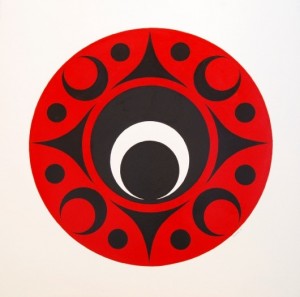 The Call for papers is now open!
The Call for papers is now open!
The deadline for online abstract submission is July 10, 2014. Mailed submissions must be postmarked on or before July 10, 2014. No abstracts will be accepted after July 10, 2014!
The Organizing Committee for the SHA 2015 Conference on Historical and Underwater Archaeology invites all of you back to the Pacific Northwest for the second time in the SHA’s history. The 2015 Conference will take place at the Sheraton Hotel in the heart of the city of Seattle, with many restaurants, famous coffee shops, and microbreweries within a short stroll. The conference venue is five blocks from the Pike Place Market and the rejuvenated piers of the Seattle waterfront with ships, waterfront dining, the Seattle Aquarium, and a new enclosed Ferris wheel. As one of America’s gateways to the Pacific Ocean, this is an amazing setting to thinking about our conference theme, “Peripheries and Boundaries.”
As SHA comes to the Pacific Northwest for the second time in the organization’s history we wanted to select a theme that reflects the unique circumstances of the region and addresses some of the issues that frame historical archaeology scholarship in the West. In some ways the theme echoes the historical circumstances of Seattle, a community that was geographically bounded and economically marginal, but whose history transcends those boundaries in the process of becoming one of the 21st century’s economic and cultural centers of the world. We expect that the theme will foster many papers and symposia that explore the many manifestations of boundaries and peripheries in the past – and in the present.
The SHA 2015 Conference Committee hopes to encourage flexibility in the types of sessions offered. Sessions can take the form of formal symposia, panel discussions, or three-minute forums, and each session organizer may organize the time within each session as he/she wishes. Sessions may contain any combination of papers, discussants, and/or group discussion. More than one “discussion” segment is permitted within a symposium, and a formal discussant is encouraged, but not required. All papers will be 15 minutes long. We strongly encourage participants to submit posters, as the latter will be given significant visibility in the conference venue.
The SHA will not provide laptop computers for presenters. If you are chairing a session in which PowerPoint presentations will be used, you must make arrangements for someone in your session to provide the necessary laptop computer.
The call for papers is posted: https://sha.org/index.php/view/page/annual_meetings
Please review the PDF on the SHA page which has detailed information about the conference, papers, and submission guidelines.
The SHA.org page, as well as Facebook, Twitter, and the Blog will be updated regularly with conference information with links to hotel reservations, travel tips, travel award application, volunteer forms, and other pertinent information. Be sure to follow the 2015 conference on Facebook and Twitter using the hashtag #SHA2015.
Any questions about Seattle 2015 can be sent to the Program Chair, Ross Jamieson, at the general program email address: <sha2015program@gmail.com>.
We hope to see you all in Seattle!
Archaeology Education at a Crossroads
This post began as a lesson in acronyms to explain SHA’s commitment and involvement with the AEC and NCSS. I’ll get to those in a minute, but the post has expanded due to recent events at the Society for American Archaeology (SAA) annual meeting to include discussion points on the future of public archaeology. We seem to be at an impasse for what we can achieve as separate societies and the need to work together or form another group was echoed in every public archaeology session I attended at SAA.
For me it comes down to the age old typology debate: are we lumpers, or are we splitters? The best answer: it depends. And it depends on the question you’re asking.
Is there enough public archaeology offered within existing professional organizations? The current model for public archaeology at SHA includes the active Public Education and Interpretation Committee (PEIC- of which I am chair), professional development workshops offered as the schedule will allow before the conference, organized panels and symposiums on the topic, a public day on the Saturday during the annual meeting, and general sessions where public archaeology papers are grouped together by the conference organizers. There’s also my favorite hybrid, integrated sessions where the lines between terrestrial, underwater, and public archaeology are blurred and tackle all subjects under a common theme. The SAA as well as other profesional societies including regional conferences have similar committees and offerings.
It seems like enough, yet the SAA electronic symposium “Getting Back to Saving the Past for the Future: Heritage Education at a Professional Crossroads” brought to light that compared to other professions, after 20 years archaeology hasn’t had nearly the impact or traction that other subjects are able to garner on a national level. Hence the crossroads.
The solution proposed at the close of the session by organizer Meg Heath was to form another organization. The Archaeology Institute of America (AIA) stepped up and offered a full day where archaeology educators could hold a conference during their annual meeting in New Orleans (January 2015). The idea came up naturally as their aia-outreach-and-education google group, which launched end of 2013, garnered hundreds of responses. Problematic for SHA members is that our conferences are scheduled nearly each and every year for the same dates in separate locations. Ben Thomas (AIA) suggested they host the southeast portion of the conference in New Orleans and SHA could concurrently host a northwest conference within our conference in Seattle. But not being in the same room, not having the same networking opportunities, and leaving it up to technology to bridge the gap between the two factions are serious obstacles to overcome. If I’ve learned one thing about conferences over the years: physical presence matters.
What are the other options? Here are four marinating in my mind.
Archaeology Education Clearinghouse (AEC)
SHA, SAA, and AIA already have a partnership in place, although its loosely defined and far too few people know it exists. The three organizations created the Archaeology Education Clearinghouse (AEC) as a convenience to sponsor a booth at the National Council of Social Studies (NCSS). NCSS is the penultimate meeting for social studies teachers, district level coordinators, administrators, and researchers in instruction and design. Over 25,000 teachers and administrators belong to NCSS and thousands attend approximately 400 sessions offered each year at their annual conference.
For the past seven years SHA has participated in the National Council of Social Studies (NCSS) annual conference through representation by the Archaeology Education Clearinghouse (AEC). We have the exhibitor booth and present a session on making the past come alive in classrooms using ready-made materials. This year the AEC expanded its traditional role and worked together over the year to develop handouts for educators specific to the grades and subjects they teach. While the main activity of our conference calls was organizing NCSS participation, we also discussed cross promotion of National Archaeology Day events and Boy Scout Jamboree.
The name Archaeology Education Clearinghouse is problematic. For one, most archaeologists are not aware the AEC exists. For two, the word clearinghouse implies we are a portal or an almanac for all archaeology education materials. But the name works for educators. They recognize what a clearinghouse is and it’s a very appropriate way to market to them at the conference—one stop shopping for them to gather resources and get to their next stop. For future joint public archaeology enterprises I hope the intent and framework of the AEC holds and increases in prominence. The three organizations should be working together to maximize efficiency for all of us doing this kind of work.
Project Archaeology
Another lumping option is to consider existing programs, such as Project Archaeology. This national program of the Bureau of Land Management (BLM) is housed at Montana State University and for 20 years they have researched, developed, and tested archaeology education materials for formal classroom settings that many of us have adapted for informal use. Their current flagship curriculum is Investigating Shelter, endorsed by the National Council of Social Studies. Project Archaeology is one of the only organizations with professional development opportunities for those interested in archaeology education. They have a national network of coordinators in place in 32 states. In addition to sessions on education trends and assessment, the bi-annual meeting always includes a reading circle on a current public archaeology work, and when possible the author(s) attend. Attendance is small but the framework and expertise is there.
Education Conferences
If we continue with lumping the societies together and we recognize that what we’re currently doing isn’t working, why not try a new model? What if those dedicated to archaeology education who generally meet before an archaeological conference met before an education conference: National Council of Social Studies (NCSS), National Science Teachers Association (NSTA), or North American Association for Environmental Educators (NAAEE)? Putting on a standalone conference is difficult work, but piggy backing on an existing one independent of when the big three meet seems a viable option. Rather than trying to bring educators to us, we go to them.
A New Society for Public Archaeology
This is the ultimate splitting option. We at SHA, more so than SAA or AIA, understand the reasons for needing to create a new society to further our own discipline. Coming up on the 50th anniversary of the founding of SHA, some of the very reasons for the formation of the society are being echoed within public archaeology circles. However, adding another meeting adds a financial constraint not many public archaeologists can manage. For myself, I rely on conferences to keep me current on archaeological issues and trends that is essential to my outreach work It would be difficult to have to pick one over another.
SHA: A Home for Public Archaeology
Whatever solutions are offered or new society put in place, I implore SHA members doing public archaeology to continue attending the annual meeting and keep infusing the creative work you are doing into the places provided by the society. Get involved with the PEIC, we are always open to new members and new ideas. Request professional development workshops you need to take your archaeology education programs to the next level. Share with colleagues successes and challenges, that’s the only way we’ll make progress on our long term goals. When you hit a an obstacle you can’t overcome yourself, organize a panel discussion to tackle the obstacle and foster growth within the society. Take advantage of the Public Day as an expo for the specialized work we do. And if you live near a host city for future NCSS (New Orleans 2015, Washington DC 2016, San Francisco 2017, Chicago 2018) come experience firsthand how important it is that we show up. It’s frightening- if it were not for us and our presence through the AEC, there would be no archaeology represented for our nation’s social studies educators.
So…are you a lumper or a splitter? Let us know what your thoughts are about the future of Public Archaeology in our discipline!
Meet a Member: Barbara Heath
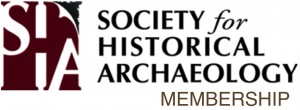 Over the coming months, we’ll be bringing you entertaining interviews with a diverse array of your fellow SHA members. Meet a member for the first time or learn something about a colleague that you never knew before. This blog series also offers current members an opportunity to share their thoughts on why SHA membership is important (Camaraderie? Professional service? Exchange of ideas in conference rooms and beyond? You tell us!). If you would like to be an interviewee, please email the Membership Committee Social Media Liaisons Eleanor Breen (ebreen@mountvernon.org) or Kim Pyszka (kpyszka@aum.edu).
Over the coming months, we’ll be bringing you entertaining interviews with a diverse array of your fellow SHA members. Meet a member for the first time or learn something about a colleague that you never knew before. This blog series also offers current members an opportunity to share their thoughts on why SHA membership is important (Camaraderie? Professional service? Exchange of ideas in conference rooms and beyond? You tell us!). If you would like to be an interviewee, please email the Membership Committee Social Media Liaisons Eleanor Breen (ebreen@mountvernon.org) or Kim Pyszka (kpyszka@aum.edu).
An Interview with Dr. Barbara Heath, Associate Professor of Anthropology at the University of Tennessee, Knoxville and the Chair of the SHA Membership Committee
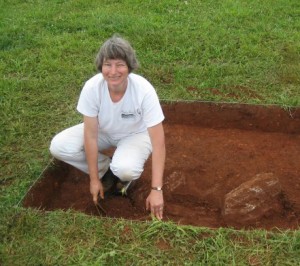 What is the first site you worked on? What is the last one (or current one)?
What is the first site you worked on? What is the last one (or current one)?
I worked with artifacts from a number of sites when I was a freshman and sophomore at William and Mary as a volunteer for the Virginia Research Center for Archaeology–I remember working with the collections from Corotoman and some of the Kingsmill sites. My first fieldwork was at Shirley Plantation in Charles City County in the summer of 1980. The last site I worked on with my students and friends was Coan Hall, a 17th-century site on the Northern Neck of Virginia in December (2013), and where I hope to continue working over the next few years. I’m also wrapping up work soon at Indian Camp, an 18th-century plantation, and 19th-century tavern, store and farm in the eastern Virginia piedmont. http://web.utk.edu/~bheath2/
Fieldwork or labwork?
I love them both, but fieldwork just a bit more. I like the physicality of fieldwork as well as the mental challenges, I love to be outside, and fieldwork has brought me to some really beautiful places.
What are you currently reading?
Ian Hodder’s Entangled, The Book Thief, and the Statutes at Large of Great Britain (each volume a real page turner) to try to understand customs laws in the 18th century.
What did you want to be when you grew up?
An archaeologist–I told my second grade teacher that’s what I would do and put it as a future career in my high school yearbook.
Why are you a member of SHA?
I’m a historical archaeologist–SHA is where my professional allegiance lies. SHA is important in so many ways–providing a venue for archaeologists to get together and share ideas, publishing Historical Archaeology, keeping us up-to-date with news, research and resources on the website and in the newsletter, and, for US archaeologists, serving an advocacy role for archaeology and historic preservation legislation. I belong to other professional organizations as well, but SHA has the biggest impact while being focused on the research areas that interest me most.
At what point in your career did you first join SHA?
I joined SHA during my first year of graduate school at Penn and attended my first conference in 1983 in Williamsburg.
How many years have you been a member (approximately)?
31 years–YIKES!
Which benefit of belonging to SHA do you find the most beneficial?
I look forward to the conference every year (even when it’s cold and miserable) to meet up with old friends, meet new people, and hear about the interesting work that’s going on around the world. I’ve seen many places that I wouldn’t otherwise have had the chance to visit by attending the conference and have benefitted personally and professionally from getting to know many of the great people who belong to SHA.
Connecting with the connectionless, or: How I stopped worrying and came to terms with the Snowbirds
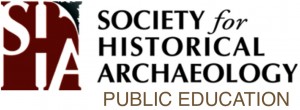 I happen to be a public archaeologist in a place many might envy (especially after this winter): southwest Florida. I have worked at the Florida Public Archaeology Network for several years and have done public archaeology and public history in a number of states across the U.S. East Coast. I was excited to take this job and apply what I’ve learned to a part of the world wholly new to me.
I happen to be a public archaeologist in a place many might envy (especially after this winter): southwest Florida. I have worked at the Florida Public Archaeology Network for several years and have done public archaeology and public history in a number of states across the U.S. East Coast. I was excited to take this job and apply what I’ve learned to a part of the world wholly new to me.
One of the biggest parts of public interpretation is knowing your audience and I quickly learned that that was going to be more difficult than anticipated. Southwest Florida’s population history is inconsistent at best. Without any real roads or rail lines, the area remained as wild as any of the west until the 1920s and 1930s. Today there are very few “native” communities. In one of the counties in my region, the local historical advisory council reported that fifty percent of the population moves out of the county every eight years (Charlotte County Historical Advisory Council 2012). The rest of the area residents are migrant families and snowbirds. “Snowbirds” (for those not in the know) are retirees who come south for The Season (the period between Thanksgiving and Easter) before returning to the Northeast U.S., Midwest U.S., or eastern Canada.
The question became: how do you connect people to a landscape and an archaeological past with which they had no personal connection? A connection to one’s own community, backyard, and family history is the first and easiest way to bring together archaeology and the wider public (like these wonderful public archaeology projects: The Maritime Archaeology Trust, Ontario’s Fugitive Slave Chapel, and the WWII Maritime Heritage Trail, Battle of Saipan).
When the local population is not at all local (or permanent) and when archaeological interest stops at resources from “back home,” some public archaeology techniques just will not work. I needed a new game plan that avoided an assumption of prior common connection or knowledge. I also needed to redefine what meaningful and successful public archaeology meant in this case. If you ever find yourself in a similar situation, here are some things I’ve learned:
Sometimes Flashy is OK
As a discipline we’ve moved far past the days of the Big Men worship. There are so many more fascinating personal and wider cultural connections found in a modern archaeologist’s research. We know so much more now that it’s almost a pity to get stuck on the George Washingtons. But to an unconnected seasonal visitor these singular individuals can act as a gateway to a much more complex discussion of archaeology.
For example, last year Florida began a state-wide initiative called Viva Florida 500 which commemorates the 500th anniversary of Ponce de León’s arrival to Florida shores.
Including the Southwest Florida leg of León’s 1513 expedition helped me broach the topics of proto-historic and historic native populations (primarily the Calusa) and their cultural adaptations in the face of the Spanish, the Calusas’ ties to Cuba, Spanish ships and shipwrecks in Florida waters, and the archaeological evidence of Florida’s role as a northern borderland to their New World colonies through lectures and children’s programming. I not only placed an emphasis on broader archaeological principles and the preservation thereof, but directed them to actual physical sites and museums where they could learn more. We even offered kayak paddles to Mound Key Archaeological State Park which was the Calusa capital at the time of contact and the site visited by León. Participants could connect the Big Man to the very people and environment he visited 500 years ago in a very tangible way.
Additionally, unusual and personal topics find niche audiences. I’ve spoken about the Florida archaeology of pets, beauty and hygiene, tourism, gambling, and toys. By far, my most popular and oft requested talk for the snowbirds is the archaeology of bootlegging and rumrunning in Southwest Florida. You might be surprised what goes over well.
Sometimes Digital and Social Media Sources are Not Always Your Friends
It is almost hard to keep up with all of the innovative ways archaeologists are using social media and digital resources to share their work with the public (for example, IUP’s Archaeology Island and VCU’s Virtual Curation Laboratory, to name a few). Unfortunately, in an area with residents (and even historical organizations) that have absolutely no online presence, all the Facebook posts, Twitter announcements, Reddit threads, and digital collections will go unrecognized and unutilized. I have had to balance my accustomed social media presence with other traditional methods like good old fashion newsprint, TV, and radio, printed and posted flyers, and a great deal of pavement pounding. In my case, old standbys have been vital.
Find the Interpretive Gaps
There seems to be a great deal of focus on a very narrow range of historical and archaeological topics in southwest Florida: the Calusa, the Seminole, and snowbirds Thomas Edison and Henry Ford. Since those were heavily represented topics, I sought out new pastures.
Fort Myers is named after a Seminole War and Civil War fort that once stood on the site. Surprisingly, this era is of little focus in the town’s historic interpretation and preservation endeavors, leaving the door wide open for new efforts. I was genuinely surprised to learn how many people didn’t know Fort Myers was named after a fort, and an unusual fort at that. Interestingly, most of the Union troops stationed there during the Civil War were from the 2nd Regiment U.S. Colored Troops.
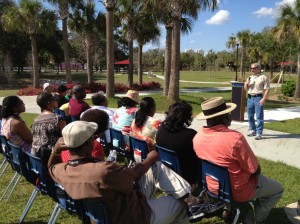
Attendees listen to local history professor, Dr. Irvin Winsboro, talk about the Battle of Fort Myers
Together with the Lee County Black History Society, FPAN initiated a community celebration commemorating the USCT in the historically African American neighborhood of Dunbar. Reenactors, community organizations, historians, archaeologists, and two American Legion posts participated in the inaugural event in which more than 150 visitors attended. 2015 marks the 150th anniversary of the Battle of Fort Myers and we plan to host an even bigger celebration to engage this underserved population.
Patience is Everything
This was (and is) the hardest lesson I’ve learned in such an attendance numbers-focused field. Constant pressure has been the key to success. My first year in Southwest Florida, well-advertised, community-requested events went completely unattended. No one. Not a seat filled.
Year two, my usual audience had two to 12 people. I have never been more elated to see two people in my whole pubarch life. At last, progress! My “success meter” has mentally shifted from attendance counts to number of programming invitations. I began to receive more speaking programming invitations to unusual locations like yacht clubs, Sugar Festivals, Swamp Heritage days, and DAR meetings. In these early stages, unsolicited invitations are markers of an accepted message and spread of legitimacy.
Year three has brought audiences of 12 to 150+ people. Seasonally rotating populations mean timing and scheduling are key. Adapting my pace to “Florida time” and re-imagining what successful public archaeology looks like in southwest Florida has given me a whole new outlook and direction for my future work. Hopefully they day will soon come when the snowbirds and other temporary and connectionless residents of southwest Florida will feel a little more connected to their home-away- from-home thanks in part to FPAN’s work.
So tell me, how do you engage connectionless populations? How have you been able to successfully connect with tourists?
Works Cited
Charlotte County Historical Advisory Committee
2012 Introductory notes. Historical Connections Conference, Port Charlotte, Florida.





